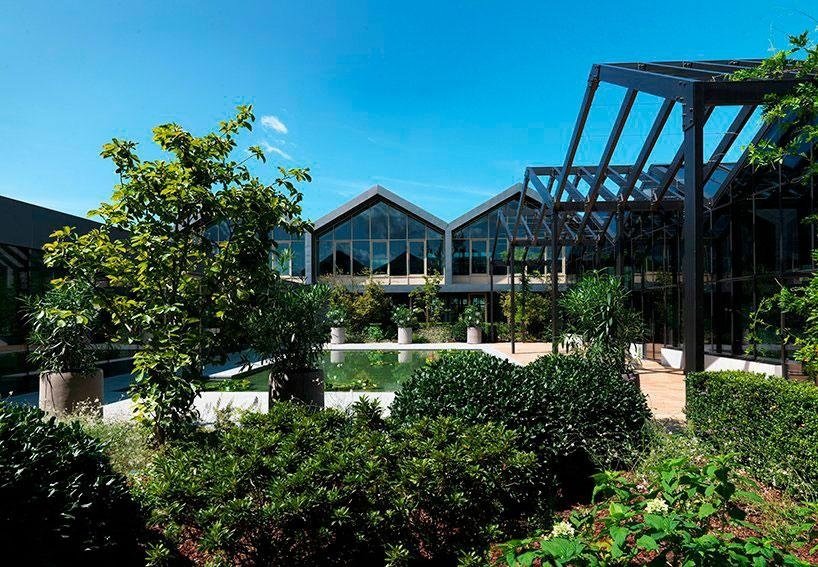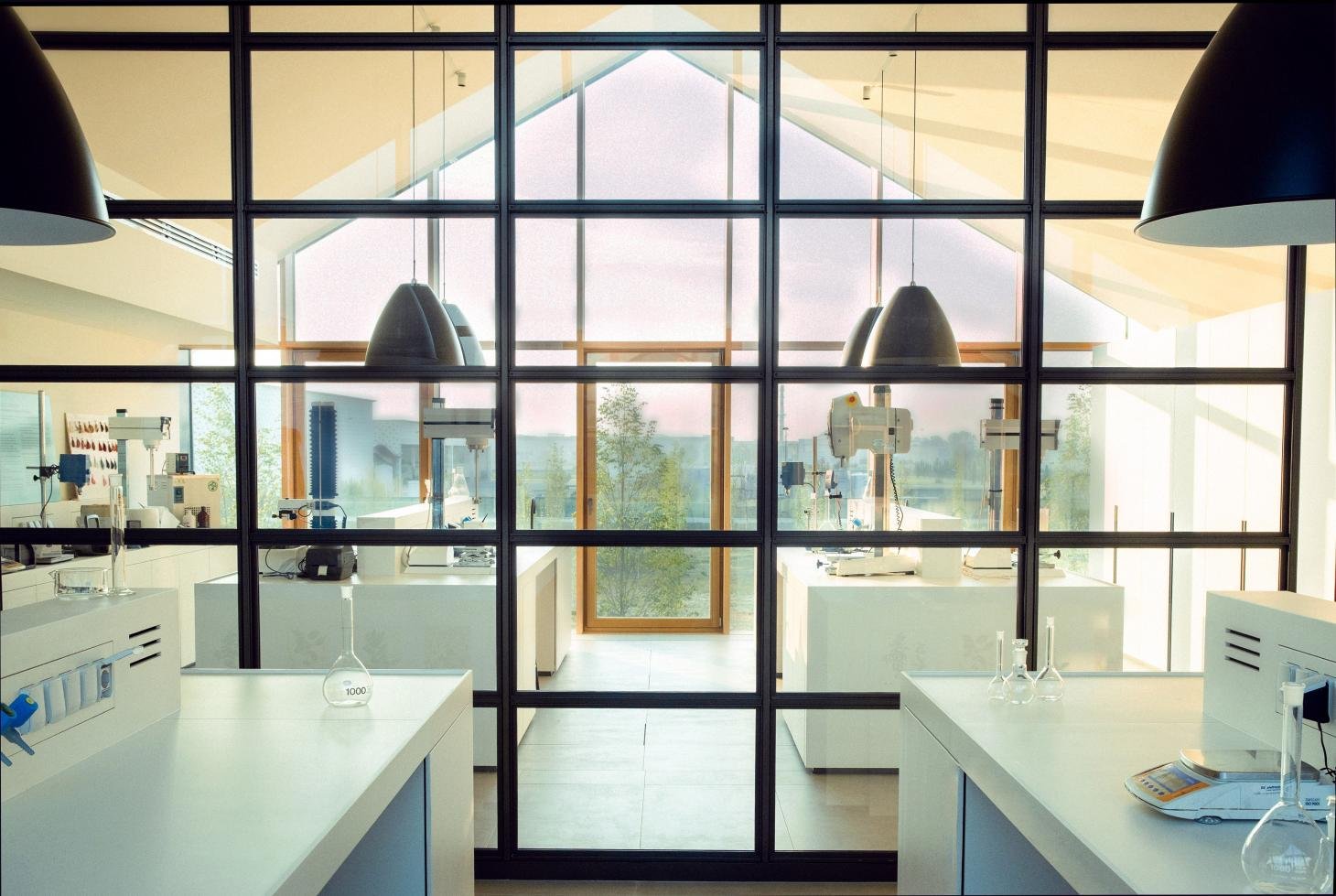Davines Village in Parma, Italy is an experiment in truly sustainable beauty production
Creating a sustainable beauty brand is always a noble but inevitably fraught endeavour. Without even an established definition of what ‘sustainable beauty’ means – does the packaging have to be recyclable? must the formulations be vegan? – it can be difficult to distinguish which brands really deserve the moniker and which are just using it for show.
Yet even the fiercest sustainability crusader would have to concede that Davines is living up to the title. The Parma, Italy based brand was founded as a cosmetics lab in 1983, before eventually creating its own hair care line, Davines, in 1993 and then a skincare line, [comfort zone], soon after. Over the course of those 38 years, Davines has distinguished itself from other beauty brands with its earnest and transparent attempts to be eco-conscious.
The most evident example of this is Davines Village, a 77,000 sq m expanse of garden and laboratory in the Italian countryside. The building complex at the heart of the village was designed by Matteo Thun & Partners with interiors by Molteni&C|Dada, and consists of offices, a research laboratory, a production plant, a warehouse, and a large central greenhouse that is both a restaurant and a co-working area.
So many eco-conscious initiatives have been factored into the design and operation of the centre that it’s impossible to succinctly list them all. But some of the most notable include the fact that no single-use plastics are used anywhere on site, the restaurant’s organic waste is repurposed for the garden using a dehydrator, and 100 per cent of the electricity used is derived from renewable sources, such as photovoltaic panels, a solar thermal system and a geothermal system.
The remaining 80 per cent of Davines Village is dedicated to green spaces, including four expansive gardens – the Garden of Aromas, the Medical Garden, the Garden of Colors and the Garden of Perfumes. There is also a greenhouse that houses an area made for cultivating citrus fruits typical of the Mediterranean, another area made for plants of the humid tropical zones, such as the banana tree, and another for dry tropical areas where catai are commonly found.
Davines team of researchers use the plants grown in these green areas to develop the formulations that eventually become Davines haircare and [comfort zone] skincare. Then, once the formulations are developed, the brand outsources the growth of the ingredients it will need to local farmers all of whom are carefully vetted by the brand for their sustainable farming practices.
The ‘Sacred Nature’ skincare collection is the most recent creation to come out of the Davines Village, and perhaps the most innovative one yet. The seven product line includes everything from cleansers and serums to masks and moisturisers, each formulated with the brand’s new ‘Scientific Garden Extract.’
The Extract is a unique, bio-fermented complex made from elderberries, known for their antibacterial properties, pomegranate peels, used as UV protection damage, and myrtle leaves, which have proven anti-aging benefits. Unsurprisingly, all of the ingredients are sustainably sourced. Either they grown by local Italian farmers who practice regenerative agriculture or, in the case of the pomegranate peels, are made from the waste of a Florence-based juice company.







